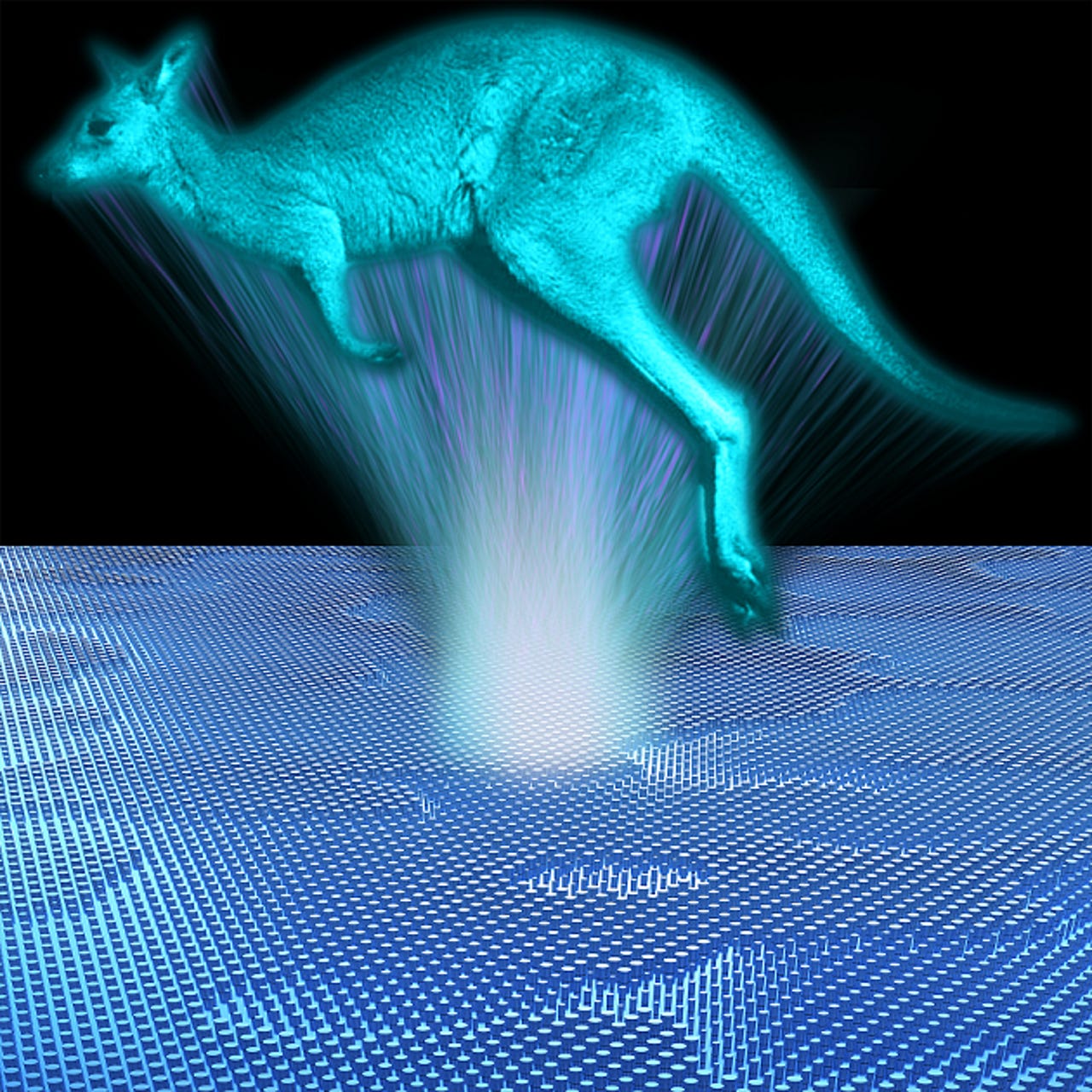Australian National University invention brings sci-fi holograms a step closer


A team of physicists from the Australian National University (ANU) has invented a tiny device using infrared that creates the highest-quality holographic images ever achieved.
Lead researcher and PhD student at the ANU Research School of Physics and Engineering Lei Wang touted the complex holographic image advancement as opening the door to imaging technologies such as those seen in science fiction movies.
"As a child, I learned about the concept of holographic imaging from the Star Wars movies. It's really cool to be working on an invention that uses the principles of holography depicted in those movies," Wang said.
According to the university, holograms perform the most complex manipulations of light and enable the storing and reproduction of all information carried by light in 3D; standard photographs and computer monitors, however, capture and display only a portion of 2D information.
"While research in holography plays an important role in the development of futuristic displays and augmented reality devices, today we are working on many other applications such as ultra-thin and light-weight optical devices for cameras and satellites," Wang added, noting that the device could replace bulky components to miniaturise cameras and save costs in astronomical missions by reducing the size and weight of optical systems on spacecraft.
Wang's co-lead Dr Sergey Kruk said the device consists of millions of tiny silicon pillars, each up to 500 times thinner than a human hair.
"This new material is transparent, which means it loses minimal energy from the light, and it also does complex manipulations with light," Kruk explained.
"Our ability to structure materials at the nanoscale allows the device to achieve new optical properties that go beyond the properties of natural materials. The holograms that we made demonstrate the strong potential of this technology to be used in a range of applications."
ANU said that part of the research was conducted in collaboration with the Oak Ridge National Laboratory in the United States and Nanjing University in China, with the research supported by the Australian Research Council and published in Optica as a memorandum, a special announcement of scientific breakthroughs.
Another team of physicists at ANU successfully completed an experiment to stop light in September, a critical step in developing future quantum computers.
At the time, the university likened the advancement to another Star Wars endeavour, saying the team performed something similar to the way Kylo Ren used the force to stop a laser blast.
"Optical quantum computing is still a long way off, but our successful experiment to stop light gets us further along the road," said Jesse Everett from the Research School of Physics and Engineering and Australian Research Council Centre of Excellence for Quantum Computation and Communication Technology at ANU. "It's pretty amazing to look at a sci-fi movie and say we actually did something that's a bit like that."